Agricultural Machinery – Tractor Attachments for different Farming Operations
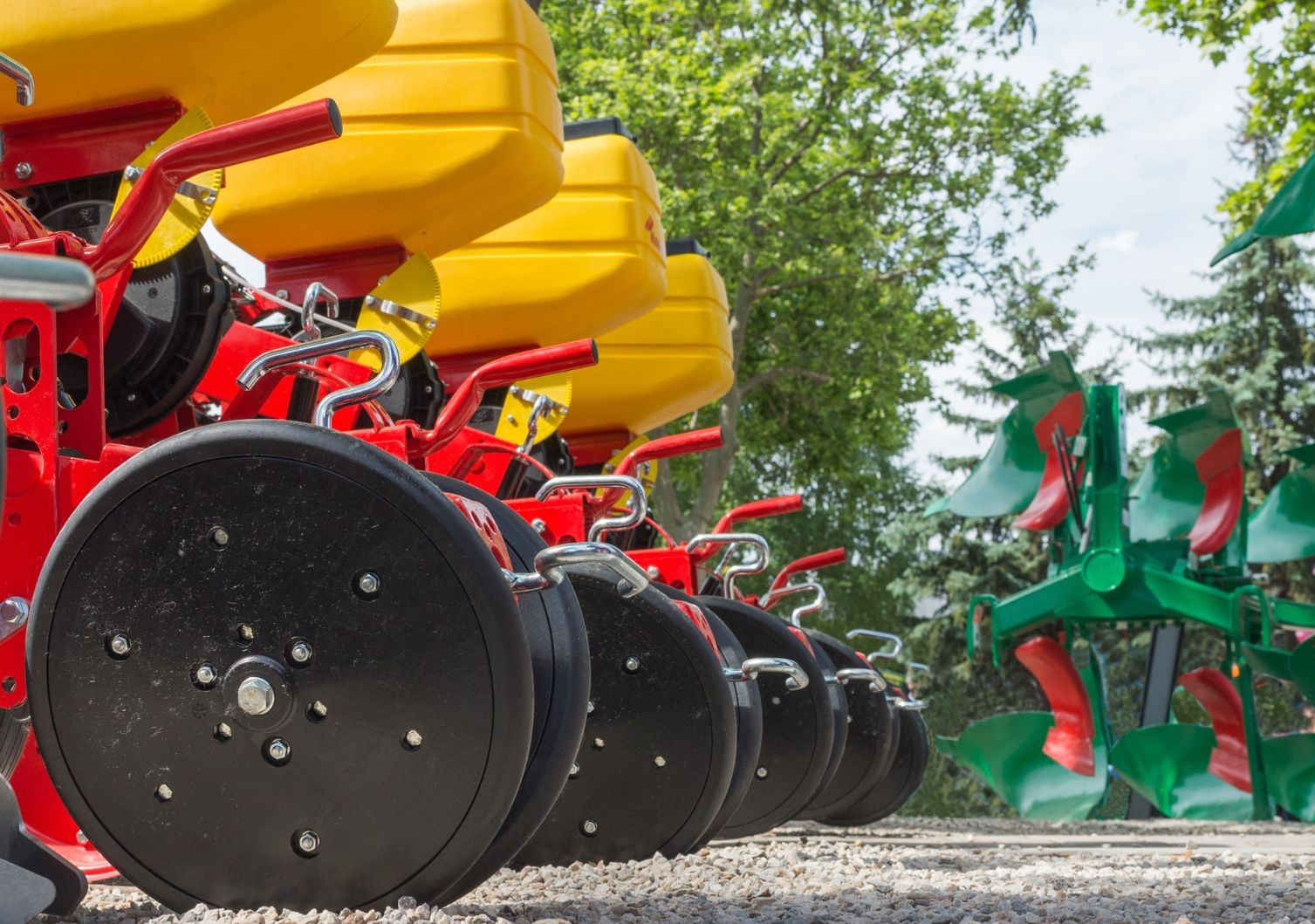
This post is also available in:
This post is also available in:
![]() Français (French)
Français (French) ![]() Ελληνικά (Greek)
Ελληνικά (Greek)
Which tractor attachments exist, and which to choose depending on your needs
The agricultural tractor is of little use without its implements. Implements came to replace a multitude of hand tools and working animals. In addition, they facilitated the cultivation of the land, dramatically reducing the time and requirement for workers.
There are general-purpose implements that can be used in almost all crops (e.g., rotary tillers), while others are for specific use (e.g., vine trimmers). We will analyze some of them and group them into machines for arable, arboricultural crops as well as dual roles.

Double role implements
Plow
A plow is a tool used for plowing aimed at breaking the cohesion of the soil and turning it over. The primary goal of tillage is to turn the soil by bringing nutrients to the surface. At the same time, the plowing airs the soil, exposes it to the sun, and treats some entomological enemies (e.g., overwintering enemies such as the pink bollworm – Pectinophora gossypiella) (1) and weeds, while the plant residues of the previous crop are shredded. The plow works the soil usually at a depth of 15-25 cm. In arable crops, it’s performed chronologically between two crops. In fields, the farmers will plant new trees deep plowing is done before the planting of trees, while moderate tillage is done between the rows in an established crop. Tillage such as plowing tends to be replaced by no-till and direct drilling. Two main reasons for adopting no-till farming are the fuel price and the decrease in soil erosion (2). The main parts of the plow include the beam, chisel, plowshare, and moldboard. A plow can be one-side or reversible. The reversible plow has two sides of moldboards upside down. The reversible plow has two sides of moldboards upside down. At the end of each row, the farmer turns over the plow to use along the next furrow, again working the field in a consistent direction. Disc plows aren’t common, and use discs instead moldboards. Modern plows are typically 4-farrows and can exceed 10. As with the implements below, there are plows on the market for the entire tractor horsepower range.
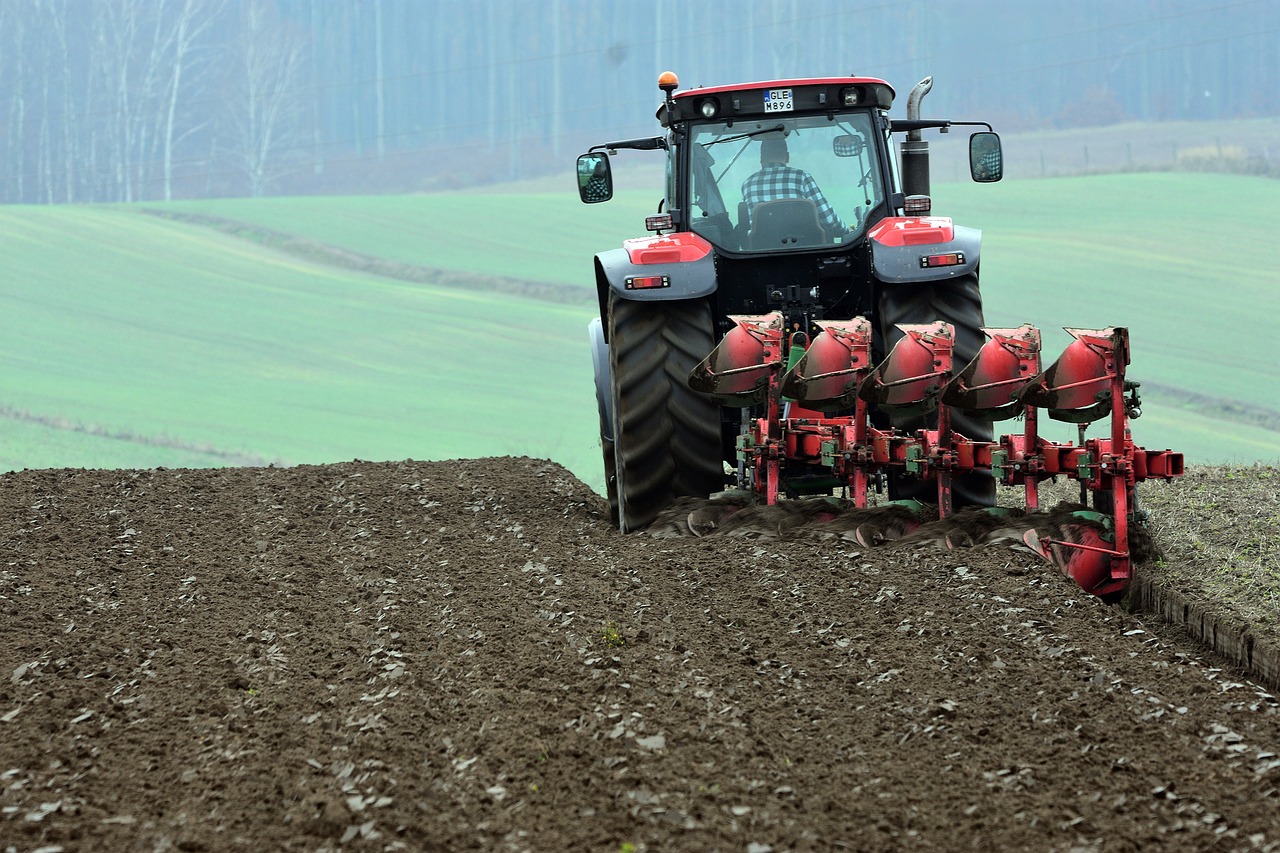 Figure 1: A 5-farrow reversible plow.
Figure 1: A 5-farrow reversible plow.
- Rotary tiller
A rotary tiller is an implement by which the farmers do tilling and digging of the field. The rototiller is used after plowing to prepare the seedbed, to deal with weeds (in some types of weeds, it is unsuitable as it spreads), digging in the fertilizer-compost, etc. This machine contains moving parts, the rotating blades on an axis that takes kinetic energy from the tractor’s Power Take-off (PTO). Rotary Tiller with automatic side shifting is a special tillage machine used especially in orchards and vineyards for digging between trees. As soon as the tiller meets a trunk, it has a metallic rod that activates its movement and returns as soon as it passes the trunk. Farmers should be careful about root injuries because of the rotating blades. The rototillers are particularly widespread in viticulture and vegetable gardens where two-wheel tillers <12 hp are also used. In recent years, however, its use has received much criticism from the scientific community due to the spread of weeds and the creation of a discontinuity (crust) in the soil due to the compression from digging (3).
- Cultivators
The cultivator is an implement, usually of simple construction, used by producers to loosen the soil after plowing or directly on fallow land. The cultivator is often similar to the plow. However, it has a different use as it does not turn the soil as is done during plowing. This implement works at a few centimeters of depth (5-20 cm). In arable crops, a cultivator is used for secondary tillage after the plowing for seedbed preparation, while in arboriculture for weed control, aeration, loosening the soil, and improving fertility. Finally, there is a category of cultivators, the subsoil cultivator (ripper), which works the earth at greater depths to deal with compaction.
- Trailers
Producers use various types of trailers to transport produced goods, agricultural supplies, and equipment. Sometimes these trailers are handmade. Their construction is usually simple, with one or two axles, and they optionally have a tipper for unloading bulk cargo. The trailer is hauled by the tractor’s drawbar and connected to the tractor’s electrical circuit for powering the lights. Big trailers also have a braking system. Producers use them to transport sacks, containers, boxes, fertilizer, compost, tools, fuel, wood, animals, etc.
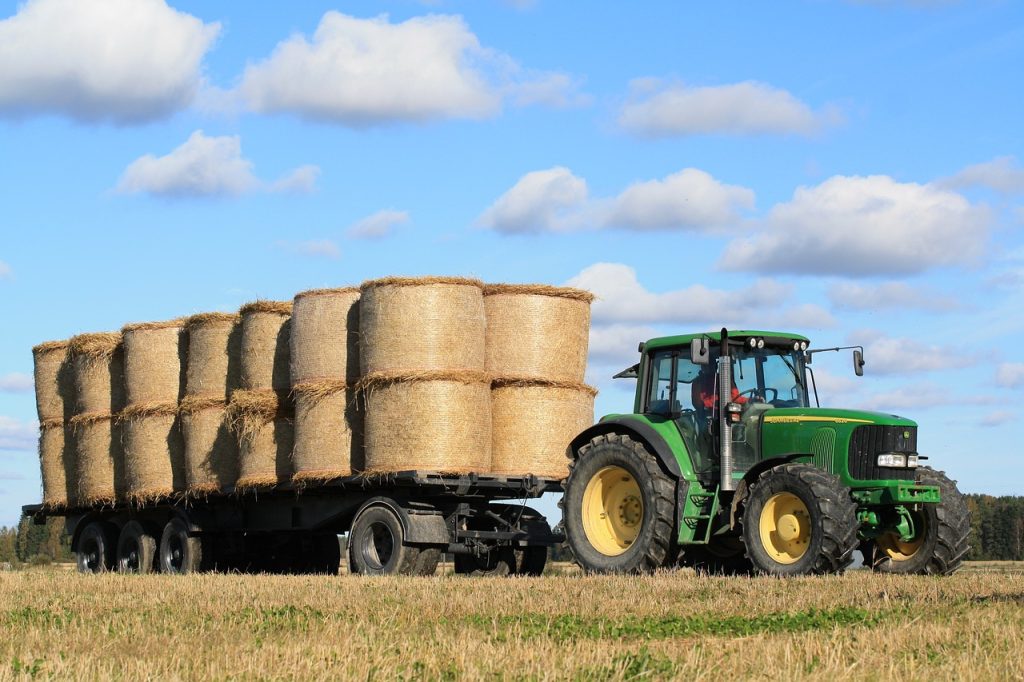 Figure 2: Platform trailer attached to a tractor. A common implement for bales transport.
Figure 2: Platform trailer attached to a tractor. A common implement for bales transport.
- Sprayer
The sprayers are implements that producers use to spray crops with plant protection products (PPPs) as well as with fertilizers. In most cases, it is an implement for agricultural tractors (mounted or trailed), while self-propelled vehicles for large-scale arable crops are also commercially available. The sprayers mainly consist of the chassis, a barrel for the solution, a stirring system, the pump for creating pressure, and the nozzle seating device (injector). The sprayer for arable crops includes a horizontal spray bar (boom) that is used to spray the surface with the spray solution. In arboriculture and viticulture, spraying can be done manually with a hose (small scales), a vertical spray bar, and a mist blower. For weed killing, we find special spray bars for spraying in a row and reducing air transport (drift). In the case of the mist blower, the nozzles are placed in a rim, and inside it, there is a large diameter fan that creates a strong airflow. These sprayers optionally include an electrostatic charge device that offers better adhesion and cover-penetration. In any case, farmers should use the appropriate spray assembly for air transport’s reduction and spray liquid’s volume, increase efficiency, and decrease the environmental footprint from PPPs use (4).
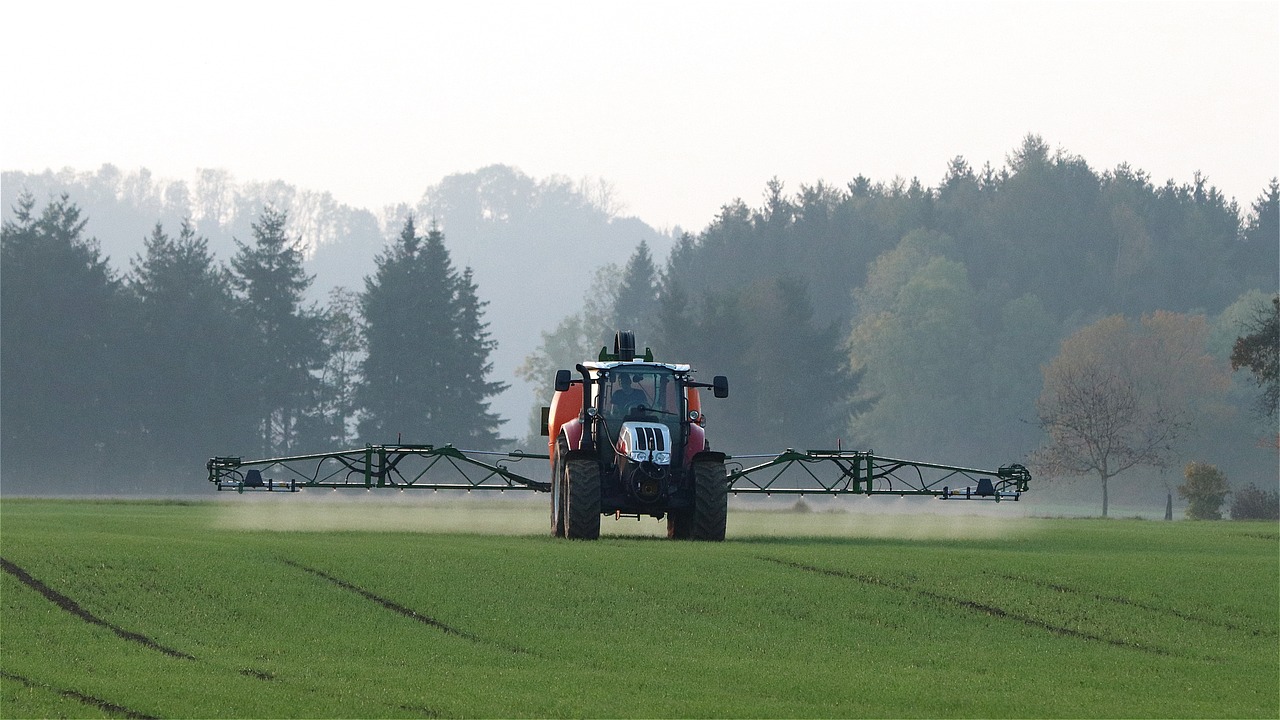 Figure 3: Mounted sprayer. This farmer is spraying a grain crop.
Figure 3: Mounted sprayer. This farmer is spraying a grain crop.
Open-field implements
- Harrow
The harrow is used to level the soil after the main plowing (primary tillage) and prepare the seedbed, to deal with weeds and destroy the previous crop’s residues. The most used type of harrow is the disc harrow which uses discs to work the soil to a depth of 10-25 cm. Discs usually have notches around their circumference. The attachment discs rotate due to the tractor’s forward motion and are not power-driven by the PTO (like the rototiller knives). In addition, there is a harrow category, the rotary power harrow, which depends on PTO’s movement. This attachment has sets of vertical metal blades which are rotated on a vertical axis and till the soil. The power harrow, unlike the rotary tiller, doesn’t form a subsoil hardpan.
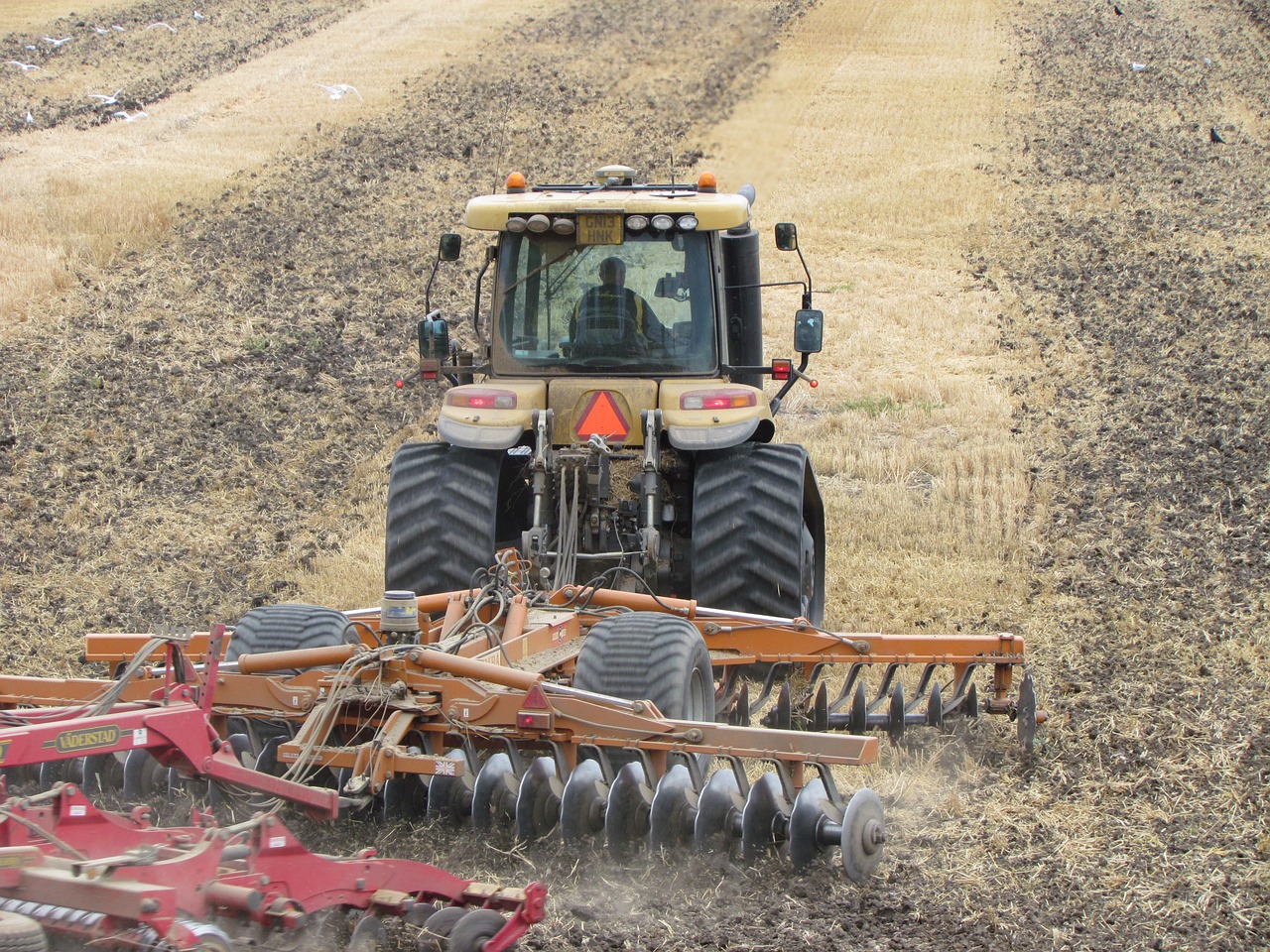 Figure 4: A track tractor is pulling two connected disc harrows. The front one is heavy-duty, and the following is lighter.
Figure 4: A track tractor is pulling two connected disc harrows. The front one is heavy-duty, and the following is lighter.
- Seeders-Planting machines
Planters are used for planting seedlings and tubers-bulbs. The implement is attached to the tractor’s 3-point hitch and sometimes requires a worker. The worker manually places the propagating material in the machine and delivers it to the designated location. They are categorized by the number of rows they can plant in a pass. Seed drills are implements used to sow fields. They replaced hand-sowing and horse-drawn machines. Seeder’s operation depends on the tractor’s movement as the drill doesn’t attach to PTO. Their main function is to open a furrow, place the seed in the row and close the gap from above. In addition, many seed drills have a container for simultaneously fertilizing the field. We divide them into simple seed drills (seeders) and precision seed drills (planters). The first ones are mainly used for seeds such as cereals, while the second ones are for larger such as corn, sunflower, beet, etc. The seed drills are further categorized according to the seed’s placing method. We find the mechanical and pneumatic drill (use of air). In the mechanical seed drills, grains fall by gravity into the ground. On the other hand, in air drills, grains fall into the soil due to airflow. On the market, there are drills and planters designed to be used in no-till farming. A no-till seeder has to penetrate the untilled soil and the layer of plant residues. Some older conventional seeders can also perform with the proper adjustment. Sowing can also be done with a fertilizer spreader without much accuracy and is mainly used to create artificial meadows.
 Figure 5: A mounted seed drill.
Figure 5: A mounted seed drill.
- Cultivator – Ridger
Arable crops in rows (e.g., cotton, corn, soybeans) require cultivating during their cycle, while some require ridging (e.g., potatoes). The tillage between the rows is done with cultivators, while the ridging is performed with ridgers. Cultivating aims to deal with weeds, better water absorption, aerate the soil and increase its temperature. Cultivators vary in size (requiring different tractor sizes) and in the tillage method. Producers can choose between several implements of various sizes and shapes of metal blades as well as inter-row rotary cultivators. Many machines are equipped with a fertilizer spreader for fertilizing in a single pass. Hilling the potato crop gives better quality characteristics to the tubers and reduces the losses from insect attack (e.g., potato tuber moth – Phthorimaea operculella) and rotting (5). Hillers-Ridgers vary in the number of rows they can hill on a single pass.
- Mowers
A widespread direction of cereals and legumes cultivation is the production of fodder (hay) for feeding farm animals. There are a variety of mowers for cutting forage crops. In all cases, the mower contains moving parts which are power-driven by the PTO and cut the stems of the plants. Μowers are divided into 3 main categories, drum mowers, disc mowers, and sickle-bar mowers (reciprocating). In the past, sickle mowers were horse-drawn and depended on the horse’s movement. Today, farmers mainly use drum and disc mowers as tractor implements. An additional feature of the cutters is the presence or absence of a crushing device, which aims to crush the stems during cutting for faster and more efficient hay drying.
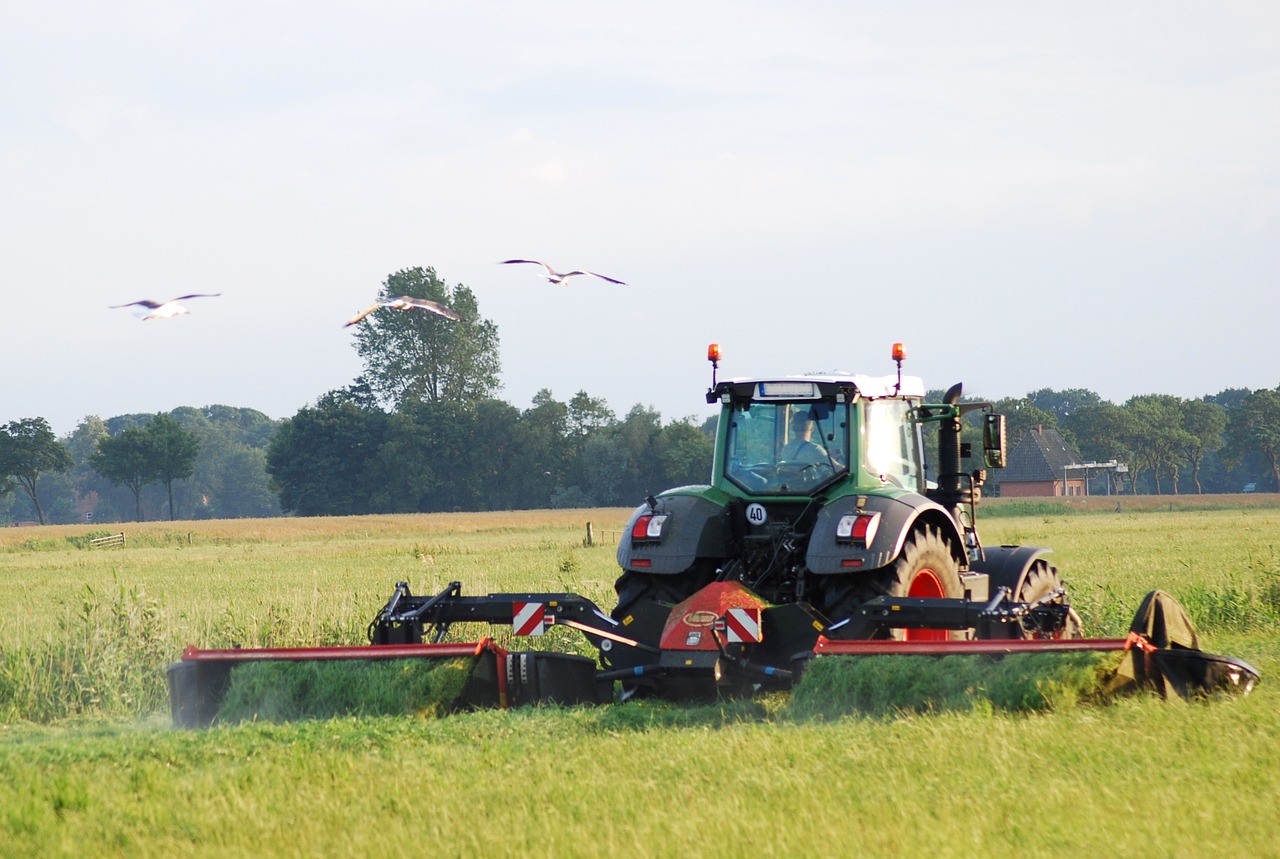 Figure 6: This farmer is mowing a grass crop with a double-side mounted disc mower.
Figure 6: This farmer is mowing a grass crop with a double-side mounted disc mower.
- Balers
In modern times, producers gather the cut hay into bales using balers. The balers are categorized based on the size of the bales produced (small-large) and the shape (square-round). The small square balls weigh about 20-30 kg and are manageable by hand. Large squares and rounds can exceed 300 kg in weight and require machinery to move them. The producer selects the appropriate type of baler based on the machinery he owns, market demand, and personnel costs.
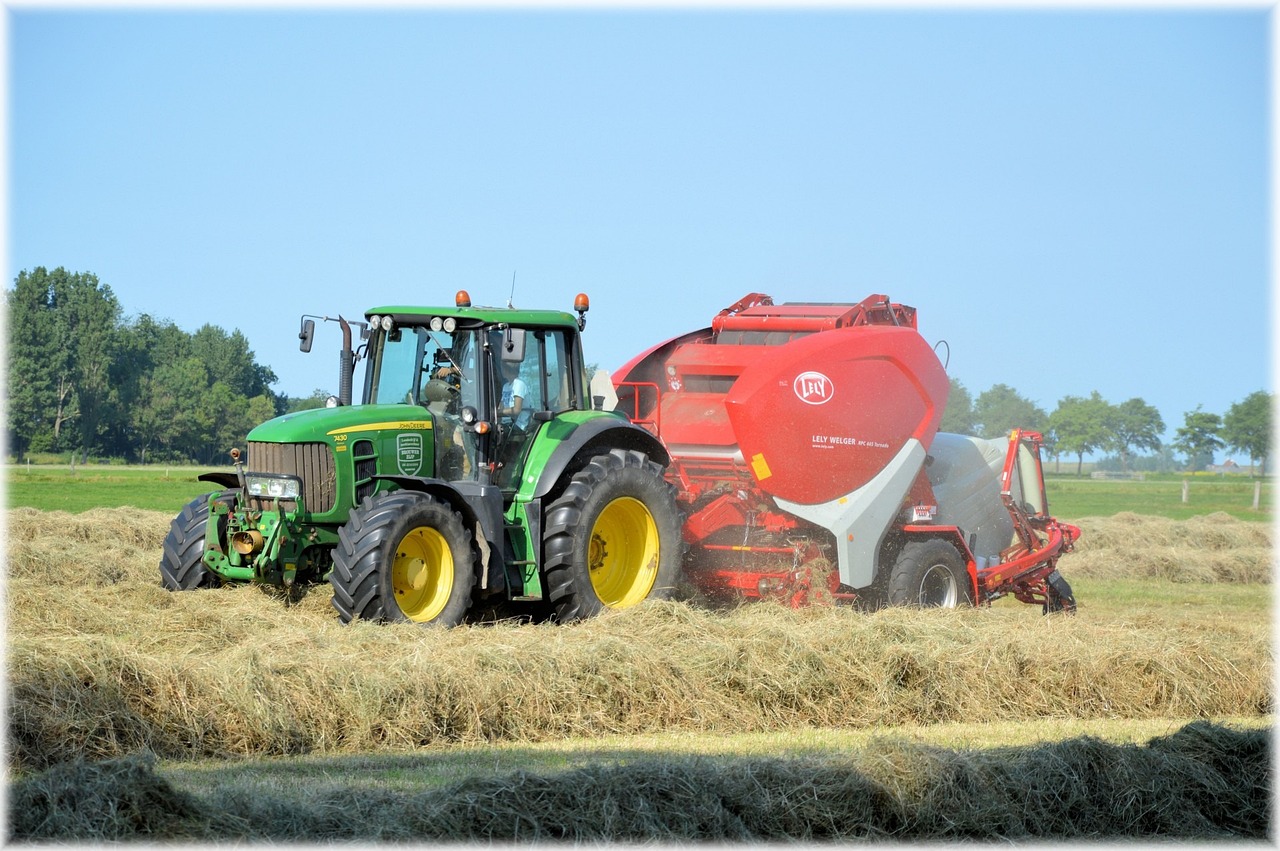 Figure 7: This baler model also wraps the hay for water protection.
Figure 7: This baler model also wraps the hay for water protection.
Orchard implements
- Mulcher and weed mower
Farmers can avoid rototiller use and its effects by using a mulcher, chopper, or weed mower for weed control. These machines work the field without digging. Because of their simple construction, weed mowers sometimes are handmade. Mulchers, especially heavy-duty ones, can also break down thick pruning residues to enrich the soil with organic matter. The mulcher visually looks like a rotary tiller. They both have a PTO-driven horizontal axis, but in mulcher is equipped with hammer flails that don’t penetrate the ground.
- Vine trimmer
A viticultural work that takes place one or more times during the active growing season in a vineyard is vine trimming. In clipping, the viticulturists cut off the ends of the shoots for better nutrition of the grapes. A mechanical vine trimmer mounted on a tractor is a structure that cuts parts of the shoots as it passes. It has vertical and horizontal bars for working at the side and top of the canopies. These bars have rotating blades on them or sickle mowers. The implement processes one or two rows per pass.
- Shredder
A shredder is a machine used for cutting branches and turning them into small chips. In the market are PTO-driven shredders and smaller ones, autonomous and equipped with an internal combustion engine. With the shredder, the farmer destroys pruning residues and logging residues. In addition, he avoids burning, which is prohibited for many months during the fire season. The biomass can be composted or processed to create wood pellets (fuel) (6). Shredding to make compost reduces the ecological footprint because the carbon doesn’t convert into CO2.
References
(2) https://calag.ucanr.edu/archive/?article=ca.v066n03p108
(3) https://www.researchgate.net/
(5) https://edis.ifas.ufl.edu/publication/IN1031
(6) https://www.rhs.org.uk/soil-composts-mulches/woody-waste-shredding-composting
Related articles:
How to choose the right tractor for your farm
Agricultural Machinery – Tractor Attachments for different Farming Operations
Boosting Agriculture Production through Mechanization: A game changer for farmers








































































